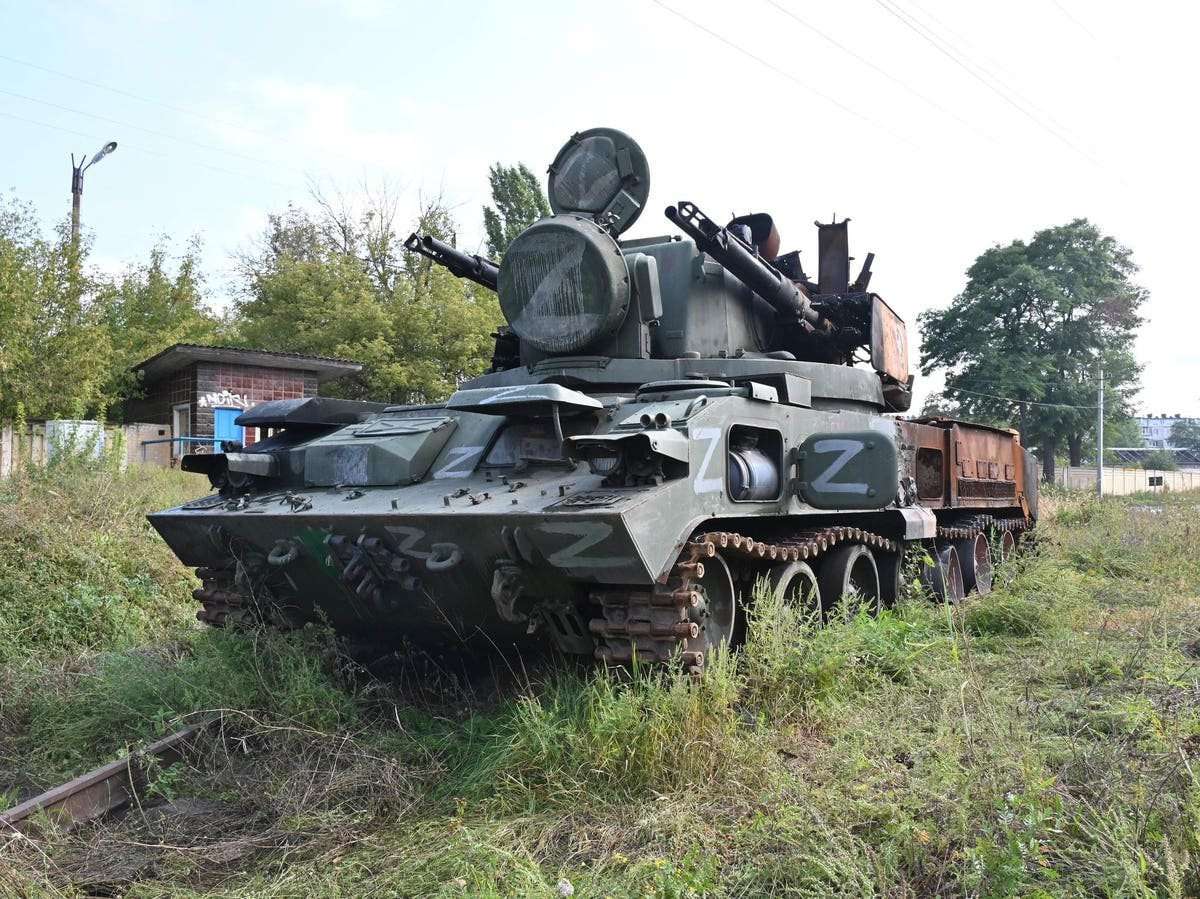Recent news reports have touted Ukraine's successful use of air defense systems to intercept a Russian hypersonic Kinzhal missile. While impressive, a more astonishing accomplishment is that the Ukrainians have likely limited the effectiveness of Russian air defense systems. Thus far in the war, both sides have employed such systems to protect their ground forces from incoming missiles and aircraft strikes. However, the Ukrainians have managed to systematically destroy Russian air defense assets, which the Russians have struggled to replace. This has the potential to play a large role in the forthcoming counter-offensive, allowing the Ukrainians to potentially control the airspace over Ukraine.
The Russian military has an impressive array of air defense systems with some of their newest systems capable of striking down very sophisticated missile systems. Doctrinally, a Battalion Tactical Group (BTG) contains one air defense platoon that includes 2 9A34M2 Strela-10 and 2 2S6M Tunguska anti-aircraft artillery systems (or comparable systems). The 91A34M2 Strela-10 ranges out to 10 km and carries 4 9M33 guided anti-aircraft missiles. The 2S6M Tunguska is more heavily armored and carries 8 9M311 guided anti-aircraft missiles along with a 30mm chain gun for low flying aircraft and helicopters.
It is unlikely that the Russians were able to outfit all of their units with these systems and had to rely on older Soviet systems for many of their BTGs; this trend has been seen across many of their equipment platforms. The older Soviet equipment is more susceptible to Ukranian jamming, which disrupts the radar system’s ability to detect and target aircraft. Additionally, they are less armored and less mobile, making them easier for the Ukrainians to locate and destroy.
Regardless, Russian air defense systems proved effective in 2014 in the War in Crimea. These systems quickly shut down the airspace in and around Crimea to Ukrainian forces, although the exact number of Ukrainian aircraft shot down is unknown. The Russians also reportedly gave anti-air assets to rebel groups in Donbas who proceeded to shoot down Malaysia Airline flight MH117.
Throughout the current war, neither side has been able to gain air superiority. Especially as the war concentrated itself to the Donbas region, both sides were able to establish a somewhat robust air defense network that limited aircraft operations. As such, ground forces were not able to get close-air support or other aviation aid. These systems, while effective against aircraft, were only partially effective against missiles and drones. While the Ukrainians were able to intercept some missiles and Shahed-136 drones, a large number of these still reached their targets. Meanwhile, the Ukrainians were able to perform a number of drone and missile strikes against Russian forces.
The Ukrainians have been systematically targeting Russian air defense systems since the start of the war. The below figure compiles the number of destroyed or captured Russian air defense systems throughout the war based on open-source imagery compiled by Oryxspioenkop.com. There was a large number of Russian losses early in the war during the failed initial invasion attempt. Since the initial invasion, the destruction rate of Russian air defense systems has remained fairly constant. The 130 destroyed systems would comprise a significant portion of the Russian air defense assets in Ukraine. It is unlikely that Russia has the ability to replace these losses with modern air defense equipment, having to rely on outdated Soviet equipment.
The Ukrainians have taken significant losses as well in their air defense systems, having lost 103 systems. Almost all of these systems were Soviet-era, and the bulk of these were from early in the war. Further, they are running low on ammunition, much of which is produced by Russia. However, Ukrainian air defense capabilities are being augmented by NATO aid, including the Patriot missile system that reportedly shot down a Kinzhal missile.
A significant indicator of the decline of Russian air defense systems is the inclusion of Hydra-70 missiles in the recent military aid packet from the United States to Ukraine. The aid package comprises equipment expected to be utilized in the counter-offensive, notably a substantial quantity of ammunition such as small arms, artillery rounds, TOW missiles, and HIMAR missiles. The Hydra-70 rounds are air-to-surface missiles that are commonly used aboard American helicopters and airplanes for providing close-air support. Although there is some speculation that these missiles may be used on drones or ground vehicles, it is more probable that they will be utilized to support the resurgence of Ukrainian air units in providing close-air support.
The war in Ukraine is a case study on the role of technology on the modern battlefield. The air war was expected to factor in critically in the war; however, air defense equipment played a large role in denying both sides use of the airspace. As the war continues, new Ukrainian air defense capabilities from NATO coupled with the destruction of Russian air defense assets may lead to the Ukrainians opening their airspace as their counter-offensive looms.
Get the best of Forbes to your inbox with the latest insights from experts across the globe.

MarcoGWR on May 12nd, 2023 at 02:43 UTC »
Seriously, the biggest failure of Russia is that all the world just find out it is totally a paper tiger, even in military.
I don't think Russia can still has any influence in international affair after this war.
Manch3st3rIsR3d on May 12nd, 2023 at 01:56 UTC »
Fucking get em, boys
Ellisd326 on May 12nd, 2023 at 00:17 UTC »
Next they'll hit and jam communications.